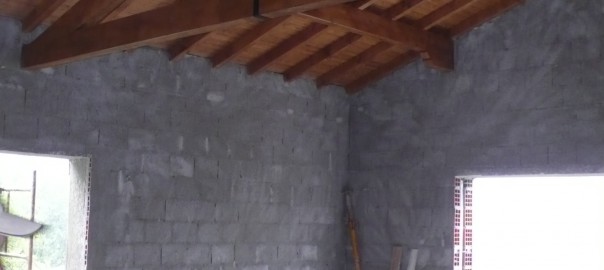Questions and answers Roofs in Portugal
Roofs because of their relative inaccessibility and importance for keeping your home dry and sound are looked at with hope more than a practical scrutiny when people are looking to buy or renovate homes here in Portugal. Often there are more questions than answers we are going to change that with some Portuguese roof Questions and Answers .
Questions and answers roof problems –
Sagging – What is meant by Sagging where do you see it and how can I identify it. Sagging in a roof usually is located mid way up the slope of the roof. It can look like a dished shape almost as though the roof has had something very heavy resting on it. There may also be missing or broken roof tiles in this area.

Missing tiles – Is usually a sign that either the tiles have broken because of frost. Yes we do occasionally get frost in Portugal and sun-dried mud tiles are very susceptible to frost damage. A sagging in a roof can also cause tiles to slip down the roof because in Portugal the roof tiles are not nailed in place.
Woodworm – Inhabits virtually every timber roof in Portugal. The conditions are perfect. The timber used in a roof is not treated and usually it is not kiln dried so any wood worm already in the timber is now in its new home in your roof! There are other wood-boring insects here too all of which weaken the roof timbers and make them susceptible to dry rot.
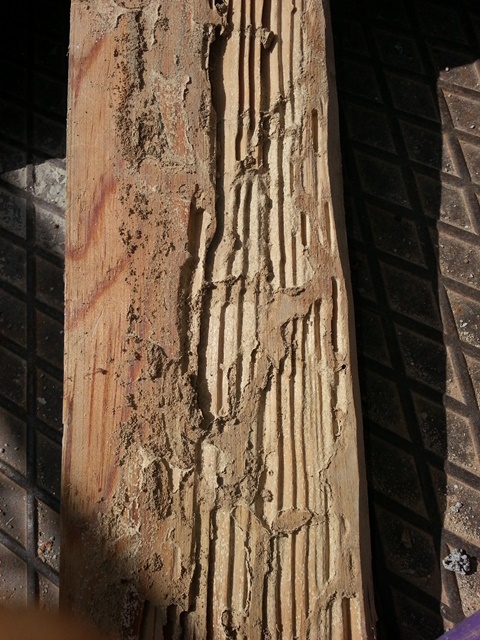
Wet rot – Is usually found where the roof joists or purlins are embedded in the external walls. If a roof has a rain water leak and the top of the external wall gets moist the roof joists will quickly rot out making the end of the roof sag and eventually collapse.
Dry rot – Actually needs occasional moisture to grow. As it grows it spreads looking for more nutrient which it takes out of timber. Wet rot is found in areas such as purlins and roof joists where a broken roof tile provided regular moisture from rain and the shade inside the roof space keeps it from drying out.
Splaying – Describes what happens when either the walls of the property move outwards or the roof slips its position on top of the walls. It looks like the roof has been pushed down and flattened a little. This is usually due to the walls not being strong enough. The bottom of the roof joists being rotten or a snapped purlin. All of which are serious.
Flashings – These metal sheets. Most commonly galvanized steel in Portugal. Are used to form a joint between the roof tiles and a chimney or adjoining walls. They very often appear to be in fair condition but can rust through causing rain to enter the roof space.
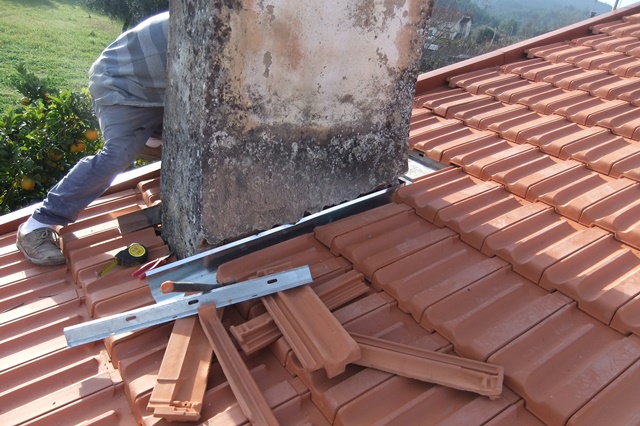
Insulation – Very rarely found in Portuguese roofs. Once you make sure your roof is sound it is a good idea to insulate the roof to make the home warmer in winter and cooler in summer.
Purlins – These are large horizontal wooden beams which help support the roof joists. Quite often in Portugal they are just tree trunks and if they have been taken straight out of the forest still green they will sag under their own weight. Not a very good start for a roof!
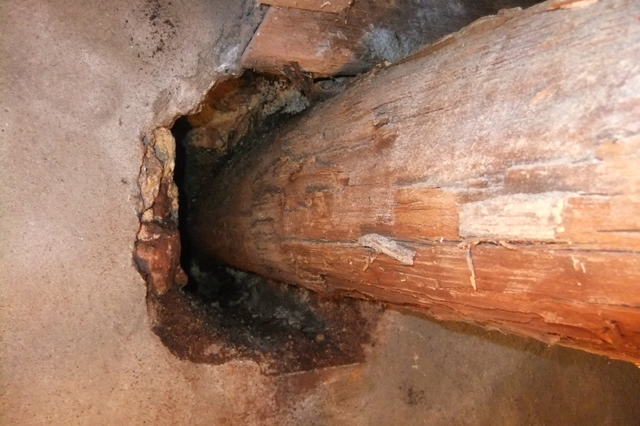
Trussed rafters – These are the “A” shaped timber structures that are viable in some roofs. Very often strangely designed and held together with bits of old tin they can be a major problem if they are effected by wood worm or rot.
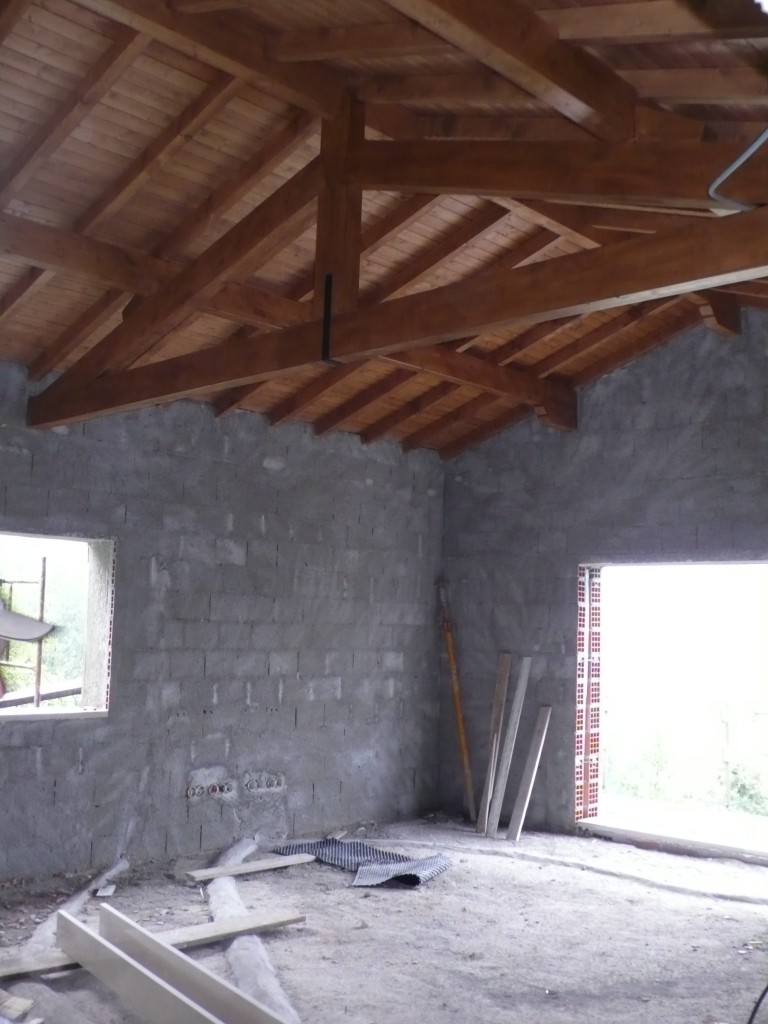
Sagging ceilings – can be caused by the amount of debris that is resting on them or large amounts of agricultural produce that was stored above them. Most often it is wood work infestation that has weakened the ceiling joists causing them to bend.
Cracked gables – Usually caused by a sagging or splayed roof. The walls may have metal plates on the outside or large cracks running horizontally. This needs a thorough investigation.
Roman tiles – These simple curved tiles look beautiful but have their own distinct problems in that they break and slip. Do not allow people to walk upon them or you will be replacing large numbers of tiles (if you can get them). If you home has roman tiles and you want to keep them it is best to install Unduline under tile sheeting to help hold them in place and provide some waterproofing.
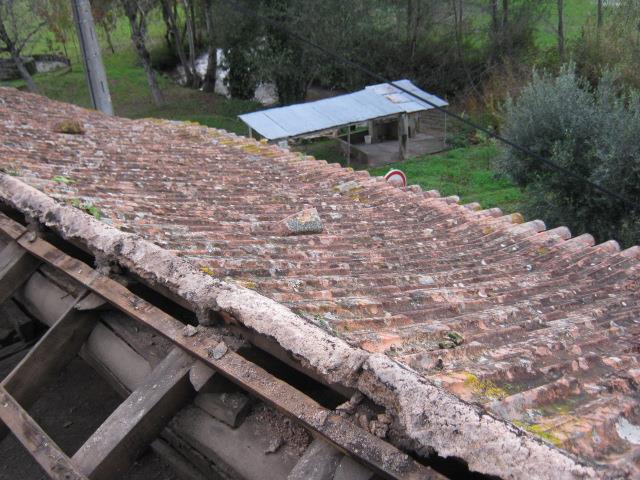
Broken tiles – Most older roofing tiles will have been produced in your local area. In the past Portugal was a backward country with very poor access to transport so roof tiles were made locally. As a result many of these small factories are now long gone which may make it impossible to find replacement tiles if you have broken tiles. Do not be tempted to use one that almost fits. You will be asking for rain to get into your roof.
Roofing felt, breathable membrane – This is even rarer than insulation in a Portuguese roof. The roofs breath because the tiles are of the old design and don’t fit together as well as the new tiles which need to have vent tiles included.
Concrete roof – very common here as they are fire-proof and have few problems if they are installed and designed correctly. You can’t just replace a timber roof with a concrete roof so take the advice of an architect. You will also need planning permission to install a concrete roof.
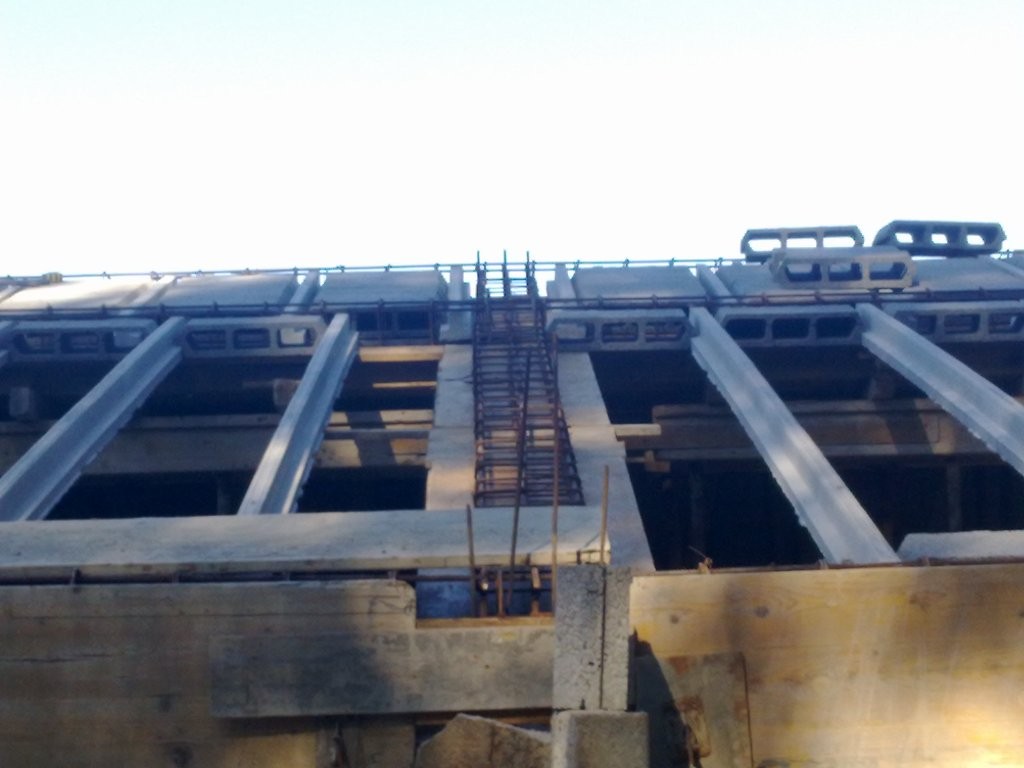
At this time of year when the first rains come many of us find ourselves focusing on our roofs and often there are more questions than answers.
If you want to be sure why not ask Castelo Construction to take a thorough look on your behalf and Before you make an offer it is always best to have all the questions and answers to hand when making a big decision.

